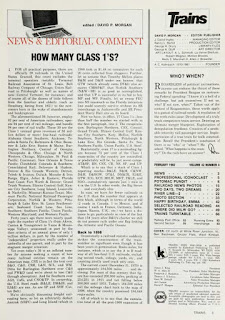- What's with the holes in the tines of US plugs?
- Are extension cords more dangerous than we've been led to believe? Hint: yes! 🔌
- Are LED stop lights really that much better than incandescent? 🚦
- Why is High the first setting on most fans?
- Was VHS actually superior to Beta? Oooh, he's meddling in an old format war! 📼
Alec took a cross-country trip on Amtrak this past August and, being an Amtrak newbie, he splurged and bought a roomette ticket. He admits he's not a railfan or a travel blogger, so it's not like he has all sorts of tips and tricks. You can get those elsewhere, one might hope, anyway. His route was from Chicagoland to sunny San Diego by way of LA and the Southwest Chief.
En route, Alec posed some very interesting thoughts and--this is why I watch him folks!--he nailed one of the main reasons why long distance rail has struggled in America. Nevermind that passenger rail was usurped by an independence-minded but vastly inefficient technology like rubber tires-on-asphalt. Nevermind that Amtrak was never supposed to make money--he got that right too, however. He said essentially that while the cost of a sleeper ticket is mostly out of the range of most Americans, additionally, working people in the USA are too time-poor to be able to splurge 3-5 days on travel. If you want to make a trip to the east or west coast from Colorado, you book it through DIA and not DUS not because "getting there is not half the fun!" but because your damnable HR policy only gives you one weeks vacation the first three years, if you're lucky! That's not right, and we all know it.
The USA is not in an emergency. We are not even trying to beat the Russians to the moon--we're just trying to get there sometime soon. We're not even trying to keep someone else from subjugating the world, like we did in WW2. We are working ourselves to the bone and why? Our kids need us. Our families need us. Our lives need us. We last added a day to the weekend over a century ago and productivity soared! Doing that again isn't a terrible idea. Certainly adding some more time off would help.
I'm not saying we overturn society. I'm not advocating a shift to communism. I'm saying we need to give our employees time to live a life worthy of the effort of living. The rest of the world gives their employees a much more sane consideration. It's time we do too. Until we do, reasonable rail travel will continue to be a luxury and worse, society will continue to slide downhill. No, I am very serious.⚒
Further Reading:
- CNBC - How Far Behind America Is In Paid Time Off (2018)
- Workest - How Much is Average PTO in the U.S.? (2021)
- US Bureau of Labor and Statistics - Employer Costs for Employee Compensation by Region (2021)













